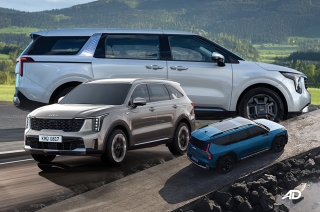
Traffic lights are a common sight, especially in urban areas. As the name suggests they help control traffic and are one of the basic things that every driver and pedestrian should know about. But aside from learning that the lights signal when to stop, slow down, and drive ahead, have you ever wondered why out of seven flashing colors in the rainbow, traffic lights use green, yellow, and red? I mean, why not violet, blue or orange?
To feed your curiosity, we have made a rundown of interesting facts about traffic lights.
The history of traffic lights

Before we get into why traffic lights have their chosen color schemes, we need to go back a bit to when they were first introduced to the public. A few decades back, there had been various attempts made to come up with the best possible solution to control the traffic. In 1868, the first-ever gas-powered traffic light, which only housed colors green and red, was installed in London. There’s a policeman in charge of the traffic light as it was manually operated. This fulfilled the need to help control vehicles at the time, especially at four-way intersections.
After that, the first electric traffic lights were introduced and were posted in Cleveland, Ohio in 1914. Unlike the previous one, these electric traffic lights come with a warning buzzer, which indicates that the light was about to change. However, in a bustling and noisy street, a warning buzzer was not enough to notify the drivers inside the vehicle, causing numerous accidents in the area. That’s why in 1920, a police officer in Detroit named William Potts, added the yellow signal to visually warn the drivers.
Garett Morgan then came into the scene and invented an automated traffic light. He patented it in 1923, which was then granted by the U.S. Patent Office in the same year, and was adapted in different countries.
In the Philippines, the first traffic light was installed in Plaza Lacson located at Santa Cruz, Manila in 1938.
Anatomy of the three-colored traffic lights

If you are curious as to why traffic lights are designed the way they are now and have the red, green, and yellow colors, here is a quick primer on why.
Red was chosen to represent stop as it has always been associated with danger. Aside from this, it is the color that has the longest wavelength making it more visible at night or a greater distance compared to other colors.
Yellow was chosen to be in a stoplight as it is associated with danger or caution. With that reasoning, it tells drivers that they should slow down as the lights are about to change and that they should not accelerate.
On a side note, did you know that signal lamps were used originally in railroads? The color white was once used for the ‘go’ sign and the color green for the caution. However, white lights caused some problems because train conductors could not see them all the time, especially during the day. Adding to this tricky situation is the tint that causes the red light to appear white, creating confusion for the operators, which leads to mishaps.
To avoid dangerous situations, officials decided to get rid of white light and replaced it with green as go signal. Green was chosen as it can be easily distinguished from the other two. Viola! That’s how we get the three-colored signal lights that we use in traffic right now.
So, whenever you’re in the car, you should realize that you’re a really bad driver when you think that all the colors in the traffic light mean to go. Dude, even pre-school students know the differences between these three. So the next time you ignore the purpose of stoplights might as well consider entering driving school again. It’s not enough that we know its meaning, the most important thing is to follow them.
Latest Features
-
An all-electric future: The Porsche Macan Electric / Featured Article
Porsche’s Macan goes all-electric; it’s a new beast with an electrified heart, yet unmistakably Porsche in performance and spirit.
-
Which Kia should I buy? / Featured Article
We’re here to help you decide which Kia vehicle is best for you, whether it’s a sedan, crossover, or minivan.
-
Why Lynk & Co is a good option for luxury car buyers / Featured Article
Lynk & Co offers premium value for those exploring the luxury market.
Popular Articles
-
Electric Vehicles in the Philippines for under P1 million
Jerome Tresvalles · Aug 19, 2025
-
Top 3 Cars For Every Lifestyle—What Cars Are Right For You? | Behind a Desk
Caco Tirona · Apr 24, 2024
-
5 Tips to Maximize Fuel Efficiency
Jerome Tresvalles · Sep 09, 2024
-
Five driving habits that are draining your fuel tank
Jerome Tresvalles · Jun 24, 2025
-
Can engine braking harm your engine?
Jerome Tresvalles · Sep 11, 2025
-
Do electric cars even need maintenance?
Jerome Tresvalles · Oct 23, 2024
-
Best vehicles for an active outdoor lifestyle
Shaynah Miranda · Jul 25, 2024
-
How to drive different types of vehicle transmissions
May 23, 2024
-
5 easy ways to keep your car interior clean
Allysa Mae Zulueta · Nov 15, 2021
-
How to survive Metro Manila traffic
Earl Lee · Aug 16, 2022




